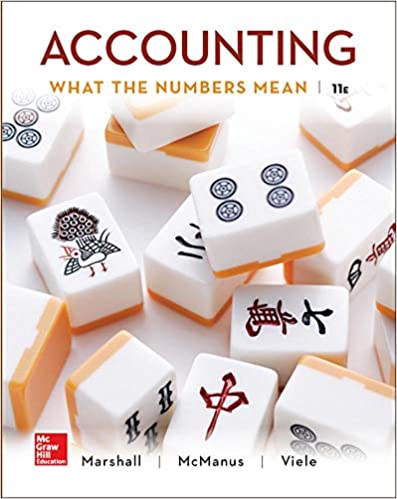
Accounting: What the Numbers Mean 11th Edition by Wayne McManus,Daniel Viele,David Marshall
Edition 11ISBN: 978-1259535314
Accounting: What the Numbers Mean 11th Edition by Wayne McManus,Daniel Viele,David Marshall
Edition 11ISBN: 978-1259535314 Exercise 11
Transaction analysis-various accounts Prepare an answer sheet with the following column headings. For each of the following transactions or adjustments, indicate the effect of the transaction or adjustment on assets, liabilities, and net income by entering for each account affected the account name and amount and indicating whether it is an addition (+) or a subtraction (?). Transaction a has been done as an illustration. Net income is not affected by every transaction. In some cases, only one column may be affected because all of the specific accounts affected by the transaction are included in that category.

b. Sold land that had originally cost $117,000 for $102,600 in cash.
c. Recorded a $612,000 payment for the cost of developing and registering a patent.
d. Recognized periodic amortization for the patent (in part c ) using the maximum statutory useful life.
e. Capitalized $28,800 of cash expenditures made to extend the useful life of production equipment.
f. Expensed $14,100 of cash expenditures incurred for routine maintenance of production equipment.
g. Sold a used machine for $81,000 in cash. The machine originally cost $270,000 and had been depreciated for the first two years of its five-year useful life using the double-declining-balance method. (Hint: You must compute the balance of the accumulated depreciation account before you can record the sale.)h. Purchased a business for $2,800,000 in cash. The fair values of the net assets acquired were as follows: Land, $400,000; Buildings, $1,800,000; Equipment, $900,000; and Long-Term Debt, $600,000.

b. Sold land that had originally cost $117,000 for $102,600 in cash.
c. Recorded a $612,000 payment for the cost of developing and registering a patent.
d. Recognized periodic amortization for the patent (in part c ) using the maximum statutory useful life.
e. Capitalized $28,800 of cash expenditures made to extend the useful life of production equipment.
f. Expensed $14,100 of cash expenditures incurred for routine maintenance of production equipment.
g. Sold a used machine for $81,000 in cash. The machine originally cost $270,000 and had been depreciated for the first two years of its five-year useful life using the double-declining-balance method. (Hint: You must compute the balance of the accumulated depreciation account before you can record the sale.)h. Purchased a business for $2,800,000 in cash. The fair values of the net assets acquired were as follows: Land, $400,000; Buildings, $1,800,000; Equipment, $900,000; and Long-Term Debt, $600,000.
Explanation
Indicate the effect ...
Accounting: What the Numbers Mean 11th Edition by Wayne McManus,Daniel Viele,David Marshall
Why don’t you like this exercise?
Other Minimum 8 character and maximum 255 character
Character 255


